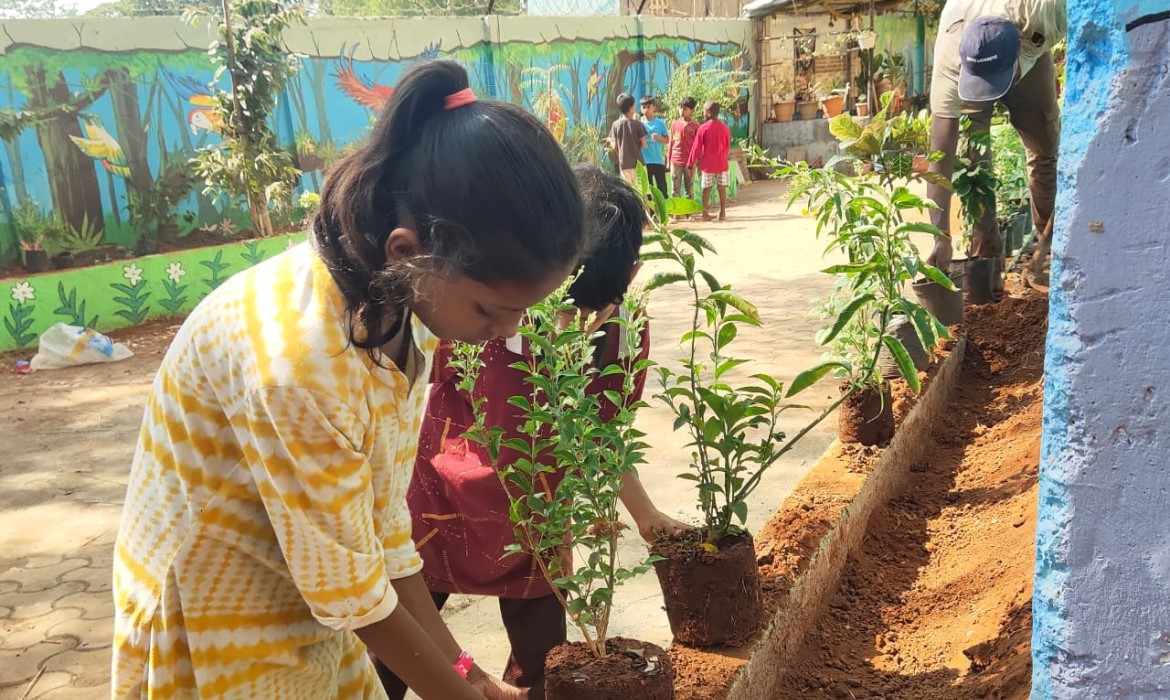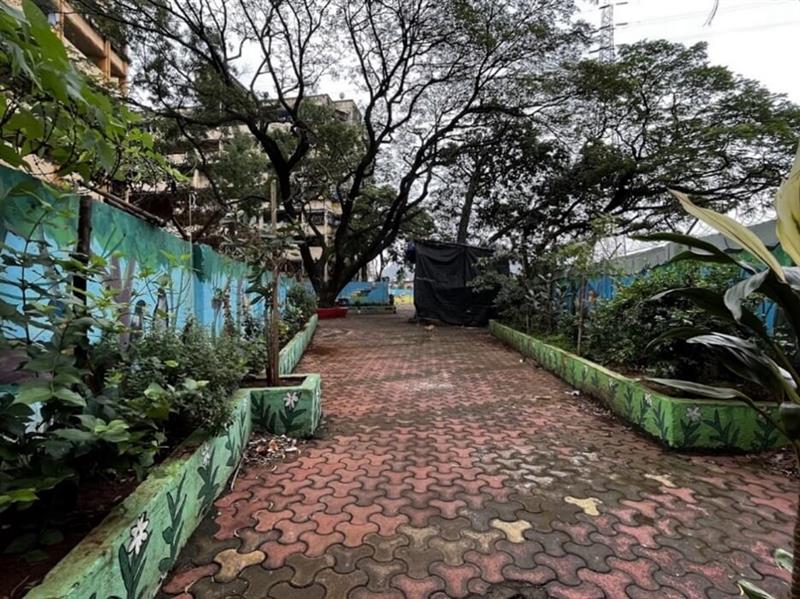Bringing Nature to Children in Disadvantaged Urban Communities

A version of this blog was originally published on 14th November 2024 on the International Institute for Environment and Development website.
Nature, when combined with the enthusiasm and creativity of children, can transform inner-city wastelands into spaces for people. Nearby trees, parks, gardens, green schoolyards and other urban green spaces are not just ‘nice to have’; they are ‘need to have’ resources for health and wellbeing. This is also the message of a recent UNICEF report.
Compared to young people who live in barren areas, children and teens who have access to trees and green spaces near their homes for play and recreation, experience greater well-being on multiple measures. These include more physical activity, better concentration and academic performance, fewer behavioral and social problems, better mental health and positive mood. These children are also better at coping with adversity.
The benefits of spending time in nature extend to adults as well. Since residents in greener neighborhoods are more likely to spend time outdoors, they form stronger neighborhood ties and show greater social cohesion. Introduction of greening initiatives is also followed by declining rates of crime and violence.
A Call from the United Nations
In 2023, the UN Committee on the Rights of the Child issued General Comment 26 on ‘Children’s rights and the environment, with a special focus on climate change.’ This is binding on all nations that have ratified the Convention on the Rights of the Child.
It requires that: ‘States shall take effective legislative, administrative and other measures to ensure that all children, without discrimination, are able to play and engage in recreational activities in safe, clean and healthy environments, including parks, natural spaces and playgrounds.’ It also urges public planning to include children’s views on creating these environments to promote their wellbeing.
Low-income families and families of disadvantaged caste and ethnic groups are most likely to live in districts devoid of nature. Widely used planning guidelines – such as situating a park within a prescribed walking radius from residential neighborhoods – fail to address all the barriers that they face.
Recent research with adolescents in marginalized communities in India and the Philippines found that they highly valued trees, parks, gardens and waterfronts. However, they were largely excluded from these spaces – this was especially true for girls. Professor Lyndsey Deaton, who led the research, observed, “Prevailing international guidelines for greenspace access disregard the nuanced needs of children in low-income communities where they are restricted by layers of fear, social norms and gatekeepers.”
So, how can urban greening bring nature into the lives of people of all genders and ages in disadvantaged communities? The following example shows that it can be done successfully by working cooperatively with communities and by actively involving children.

Targeted Greening Led by Children
The Mumbai Climate Action Plan set the target of increasing the city’s green cover to 40% by 2030, ensuring equitable access to green open spaces, and restoring and enhancing biodiversity.
To assist the city in achieving these goals, WRI India used satellite imagery to map the slums and informal settlements with the lowest vegetation index and highest heat stress. It engaged diverse stakeholders to nurture greening in targeted, vulnerable neighborhoods, and partnered with the Garden Department and Tree Authority at Brihanmumbai Municipal Corporation, Tata Institute of Social Sciences and Youth for Unity and Voluntary Action (YUVA).
One pilot site is Lallubhai Compound, a slum resettlement in the multi-dimensionally deprived M East ward. A group of 16 apartment buildings at the southern tip of the compound had an unsafe central open space called Lal Maidan and some neglected peripheral open spaces. This cluster was chosen for greening intervention. WRI India and YUVA, who have a long history of working in the community, teamed up to turn these derelict spaces into community assets.
YUVA started by conducting placemaking workshops with children and young people to make the peripheral open spaces greener and child friendly. The children’s designs primarily focused on planting more trees, brightly painting the long wall, and including more lighting and seating.
After: Children painting the wall. Photo by Sagar Reddy/ Bal Adhikar Sangharsh Sanghatana.
Space for Nature and People
The team located 13 planting sites and brought a naturalist to help the community select and maintain the native plants. About 30 children participated in tree planting. They fashioned tree guards out of bamboo, rope and green cloth to protect each newly planted tree. The apartment residents who overlooked the project site took charge of the watering schedule. On their way back from school, enthusiastic children often empty their school water bottles or bring buckets from home to water the plants. The community engaged with the local solid waste management crew to ensure they swept the site every other day.
The harassment, drug abuse and fights that previously plagued these spaces declined – more children and women started to visit and enjoy the new green public space. To build on this, YUVA organized structured and unstructured games for children every evening. When they wanted to paint the area, a youth artist was employed to help them design and execute murals to enliven the space. The larger Lal Maidan site is targeted for the next intervention and has already been approved by the Brihanmumbai Municipal Corporation.
The lessons gained here were shared in a city-level workshop in October 2023 to strengthen partnerships that can implement and sustain these nature-based solutions for quality open spaces in vulnerable urban communities across Mumbai. The workshop also explored institutional mechanisms to support collaborations and mobilize financing for long-term environmental and social benefits.
After: A place for play. Photo by Shruti Maliwar/WRI India.
Concluding Thoughts
The UNICEF report ‘The Necessity of Urban Green Space for Children’s Optimal Development’, and General Comment 26 of the UN Committee on the Rights of the Child outline recommendations for communities and municipal and national governments. A fundamental first step is creating spaces where children and women feel safe. Children and their communities are the experts in co-designing spaces that feel safe, accessible and attractive to all.
UNICEF, the World Health Organization (WHO) and UN-Habitat are collaborating to develop guidelines for public spaces that reflect children’s insights, with a stronger focus on informal settlements and humanitarian settings. Meanwhile, in Indian cities, initiatives like the Nurturing Neighborhoods Challenge by the Ministry of Housing and Urban Affairs are mainstreaming the idea of accessible public spaces for young children and caregivers in policy and planning and through targeted interventions in medium and small cities.
Louise Chawla is a professor emerita in the Program in Environmental Design at the University of Colorado Boulder, where she serves as a fellow in its Community Engagement Design and Research Center.
